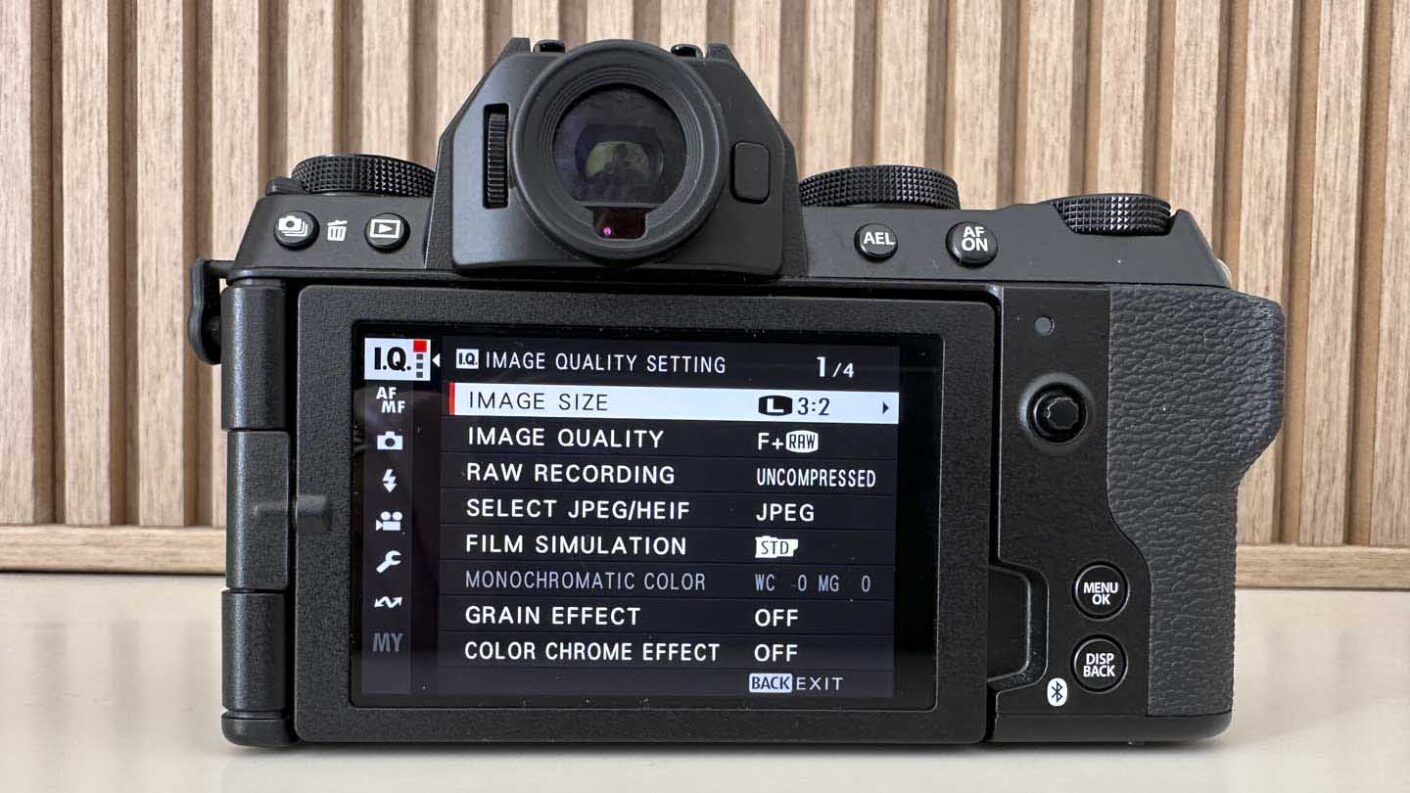The Fujifilm X-S20 has the same 26.1MP back-side-illuminated (BSI) X-Trans CMOS 4 sensor as the Fujifilm X-T4 but it’s paired with the company’s latest latest processing engine, the X-Processor 5. This means that the X-S20’s general speed is boosted over that of the X-S10 and the new camera has AI-based subject-detection AF that is capable of detecting animals, birds, cars, motorcycles, bicycles, airplanes, trains, insects and drones.
Fujifilm has also given the X-S20’s Auto exposure mode a new Auto Subject Detection mode in which the camera detects a subject and tracks it automatically, ensuring that it is sharp in stills or video. This is activated by default in Auto exposure mode and can be turned off. It’s not possible to specify a specific subject to detect in Auto mode.
In addition, the Fujifilm X-S20 is capable of recording 6.2K video internally at 29.97p/25.00p/24.00p/23.98p with 10-bit colour and bit rates up to 360Mbps (in H.265 All-Intra 4:2:2 MOV, H.265 All-Intra 4:2:0 MOV, H.265 Long GOP 4:2:2 MOV or H.265 Long GOP 4:2:0 MOV). Naturally, there are a host of other video resolutions available including C4K (4096×2160) and 4K (3840×2160) video at 59.94p/50.00p/29.97p/25.00p/24.00p/23.98p in H.265 All-Intra 4:2:2 MOV, H.265 All-Intra 4:2:0 MOV, H.265 Long GOP 4:2:2 MOV, H.265 Long GOP 4:2:0 MOV, H.264 Long GOP 4:2:0 MOV or H.264 Long GOP 4:2:0 MP4. Meanwhile, Full HD video at up to 240P in High speed mode.
Alternatively, the Fujifilm X-S20 can record 12-bit Apple ProRes raw video at resolutions up to 6.2K at 29.97fps to an HDMI-connected Atomos recorder. It’s also possible to record Blackmagic Raw footage at up to 6.2K 29.97fps to a Blackmagic Design Video Assist 12G.
As usual, there’s an onboard microphone, but the 3.5mm microphone port enables an external mic to be connected for better audio recording. There’s also a headphone port to enable audio monitoring.
F-Log2 (along with F-log View Assist) is available to enable the dynamic range of the video to be pushed to over 13+ stops, giving greater scope for post-capture adjustment.
Fujifilm has also given the X-S20 a new Vlog Mode with a dedicated setting on the mode dial. When this is selected, the settings change to those suitable for shooting from in front of the camera – vlogging or making video selfies. This mode can be tailored to shoot in your preferred exposure mode, effectively making it a custom shooting mode for video.
Helpfully, the Fujifilm X-S20 can operate as a webcam without any additional software when it’s connected to a computer via a USB-Type C cable. You get full control over the exposure settings and Film Simulation modes while live streaming.
As is expected now, the Fujifilm X-S20 has 5-axis in-body image stabilisation (IBIS) built in and it’s said to extend the safe hand-holdable shutter speed by up to 7 stops.
While the X-S10 accepts the NP-W126S battery, the Fujifilm X-S20 uses the newer NP-W235 battery that is also used in the Fujifilm X-T5, X-H2S and X-H2. In the X-S20, this battery is claimed to enable over around 800 images to be shot on a single charge. That’s more than double the number of images that can be shot with the X-S10’s battery.
Other Features
The Fujifilm X-S20 has 19 of Fujifilm’s excellent Film Simulation modes, plus Grain Effect, Color Chrome Effect and Color Chrome FX Blue.
It’s also possible to record HEIF instead of Jpegs. HEIF files deliver greater dynamic range than Jpegs, and they take up less storage space, but currently there’s limited scope to edit them and they’re not a great choice if you want to share images widely.
The X-S20 has Fujifilm’s Multiple Exposure mode which enables up to 9 images to be composted in-camera with Additive, Average, Bright or Dark blend modes available.
Pixel Shift Multi Shot mode is not available on the X-S20.



